Do you have a question about the Siemens SITOP PSU6200 and is the answer not in the manual?
Detailed description of the SITOP PSU6200, its functions, and components.
Explanation of the input, output, and signaling terminals and their connections.
Information on adjusting the output voltage using the front-panel potentiometer.
Details on LED indicators and signaling contacts for monitoring device status.
Configuration of the device's operating mode via DIP switches.
Schematic representation of the internal functional blocks of the power supply.
Physical dimensions, mounting sizes, and weight of the power supply units.
Guidelines for mounting the device in the standard vertical position for optimal cooling.
Derating factors and considerations for alternative mounting positions.
Requirements and recommendations for connecting the power supply to the AC or DC line.
Instructions for connecting loads to the output terminals of the power supply.
Specifications related to the input voltage, frequency, and current.
Specifications for the DC output voltage, current, regulation, and load capacity.
Data on the efficiency of the power supply at various load and input voltage levels.
Parameters related to the dynamic control behavior of the output voltage.
Information on overvoltage, current, and short-circuit protection mechanisms.
Mean Time Between Failures (MTBF) rating for the power supply units.
Details on connection systems, housing dimensions, and mounting types.
Reference to dimension drawings and CAD data available online.
Electrical safety parameters, isolation, protection class, and leakage current.
Electrical test voltages applied for safety certification and field testing.
List of certifications and approvals obtained by the SITOP PSU6200.
Electromagnetic compatibility standards and performance for electrostatic discharge, fields, and surges.
Guidelines for connecting multiple power supplies in parallel for higher output power.
Methods for overload and short-circuit protection in the 24 V output circuit.
Using buffer modules to maintain output voltage during brief line voltage dips.
Solutions for buffering longer power failures using DC-UPS modules.
Detailed description of the SITOP PSU6200, its functions, and components.
Explanation of the input, output, and signaling terminals and their connections.
Information on adjusting the output voltage using the front-panel potentiometer.
Details on LED indicators and signaling contacts for monitoring device status.
Configuration of the device's operating mode via DIP switches.
Schematic representation of the internal functional blocks of the power supply.
Physical dimensions, mounting sizes, and weight of the power supply units.
Guidelines for mounting the device in the standard vertical position for optimal cooling.
Derating factors and considerations for alternative mounting positions.
Requirements and recommendations for connecting the power supply to the AC or DC line.
Instructions for connecting loads to the output terminals of the power supply.
Specifications related to the input voltage, frequency, and current.
Specifications for the DC output voltage, current, regulation, and load capacity.
Data on the efficiency of the power supply at various load and input voltage levels.
Parameters related to the dynamic control behavior of the output voltage.
Information on overvoltage, current, and short-circuit protection mechanisms.
Mean Time Between Failures (MTBF) rating for the power supply units.
Details on connection systems, housing dimensions, and mounting types.
Reference to dimension drawings and CAD data available online.
Electrical safety parameters, isolation, protection class, and leakage current.
Electrical test voltages applied for safety certification and field testing.
List of certifications and approvals obtained by the SITOP PSU6200.
Electromagnetic compatibility standards and performance for electrostatic discharge, fields, and surges.
Guidelines for connecting multiple power supplies in parallel for higher output power.
Methods for overload and short-circuit protection in the 24 V output circuit.
Using buffer modules to maintain output voltage during brief line voltage dips.
Solutions for buffering longer power failures using DC-UPS modules.
| Brand | Siemens |
|---|---|
| Model | SITOP PSU6200 |
| Category | Power Supply |
| Language | English |
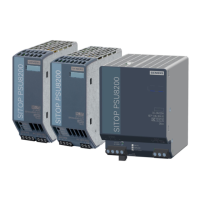
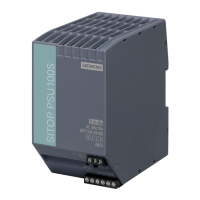
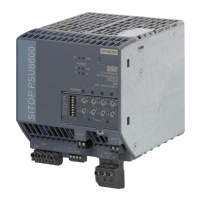
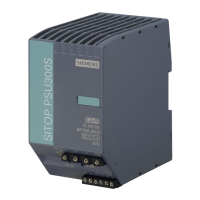
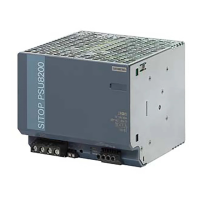

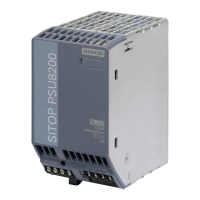




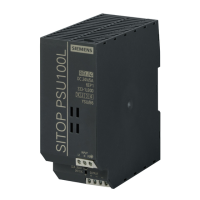
